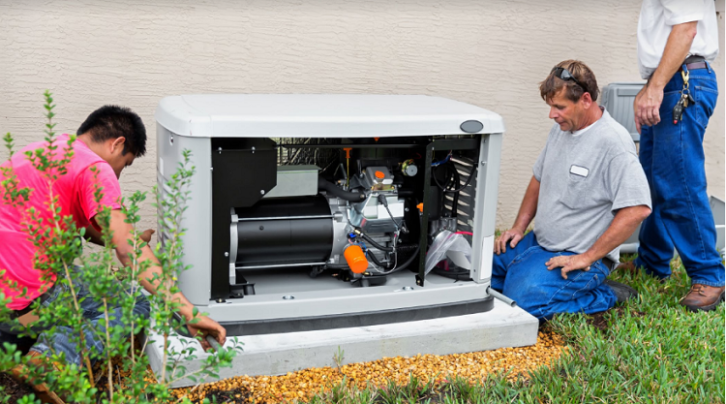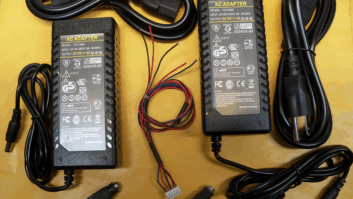
This story is excerpted from the free Radio World ebook “Plan B: Ensuring RF Readiness.”
A transmitter site is the narrow neck of a bottle — the departure point before the audience receives our product. At most stations, the site is remote from the program source and is unmanned.
“Hardening” the site must involve more than fencing and signs. If you’re serious about your business and your signal, your plant must be robust, durable and capable of self-healing.
Generally speaking we have three areas of concern: security, functionality and provision. Each requires that you identify potential points of failure (PPoF); develop the best solution or methodology to strengthen or eliminate the weak points; and implement those changes.
Of the three, I am most involved in provisioning: Does the site have everything needed to operate properly, optimally and continually?
The list of items that could take you off the air is endless. PPoFs that might be found in any plant include poor system design or layout; equipment inappropriate or insufficient for the task; poor maintenance; and insufficient spares for items that wear and can fail without warning. Then are the many potential points of failure specific to a particular installation.
I have written it so often that we should use an acronym for it, but: You cannot afford anything less than the best when that item is in the mainstream of your business. One can skimp on office trashcans and amenities or client lunches. But if a piece of gear is in the air chain, it has to be the best and operating at peak. The audience knows a station by what it hears on the air; the signal and sound had better be terrific.
Ask Yourself
Some nuts and bolts of power provision:
Is your site getting its power from the best feed — not just the one that is most convenient for the utility?
Is your power tap on the neighborhood feed, or the area feed? The former can add thousands of additional feet of wire and dozens of poles to your circuit — not to mention that your plant may be on a common primary and secondary distribution, which means that your supply is very communistic; every fault and suffering on the system you will get as well, including noise, poor regulation, uneven phases.
Sometimes the solution is just to move your transformer feed to the top conductors on a multi-circuit pole. If your power quality (PQ) is truly poor, you may need a separate feed from a cleaner, more reliable supply point.
How about your supply transformers? Properly grounded? If on a pole, properly supported? Properly GEP wired, or a mess of 14 neutral splices under a single wire nut? Phases balanced? Clean sine wave, or showing artifacts of square wave issues from overloading? Can you fry eggs on the top of your pad-mounted transformer when all the users have their HVAC running wide open?
Each of these defects indicates a potential point of failure.
Gensets
Generators are the next line of power defense and involve their own maintenance requirements.
Periodic maintenance is a must. This is more than punching the date card on the attached tag.
Generators must be tested under load … all the loads! If one generator supplies all site users, all loads on that generator should be operated simultaneously on the generator for at least half-hour, every month.
With all loads present, is the voltage solid on spec, and not sagging when motors such as AC compressors start? Is the output frequency 60 Hz? Will it operate automatically in the event of any of the five critical failures (loss of phase; phase reversal; high or low line voltage; and total loss of power)? Are the block heaters running? If the unit is thermostat-controlled, is the thermostat functional and set at the appropriate coolant and ambient temperature?
No matter what, every generator should be exercised on a weekly basis for at least 20 minutes.
Batteries should be maintained on an appropriate trickle charger. The batteries themselves should be replaced on the recommended schedule of the generator manufacturer. If none is given, the batteries should be replaced on a three-year increment, but sooner if exposed to extreme temperatures.
Calculate the run time provided by fuel stored on site. Extensive backup generation may not be much help if you need it for days and only have fuel for a few hours.
For many reasons, keep fuel tanks as full as possible. Emulate cellular operators who place sensors on tanks to signal that a tank needs a fill. This level signal is usually a DC analog; your remote control can use this value as an alarm limit. When the tank is, for example, three-quarters full, you can call the fuel service to top off. A second value could be one-quarter full, so that you will be kept aware of how much longer the site can run during a long-term outage. One of my clients has a remote control with an action program that calls the fuel service automatically when either of these limits is reached.
All tanks should be protected from such dangers as falling ice, and secured firmly with fences and spill sumps. Locks on fills are a good idea, especially during times when diesel is expensive and liable to be siphoned from remote unsecured fuel tanks.
We mentioned spare parts. For to the generator, you should have at least two oil and two air filters on the shelf, as well as a set of fan belts and a complete change of oil plus a quart. You do not want to go hunting for these parts at 3 in the morning or when off the air.
Read the author’s series “The Big Picture of the Small End of Power Generation,” about how to choose and install a generator:
Part 1: The Good, the Bad & the Noisy
Part 2: Sizing and Selection
Part 3: Pragmatics 101
Part 4: Putting It All Together







